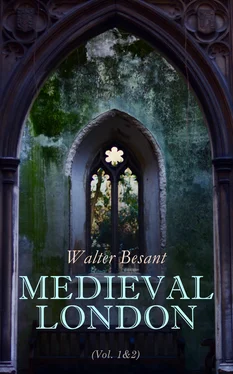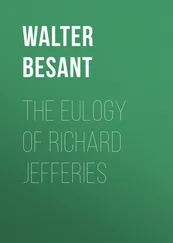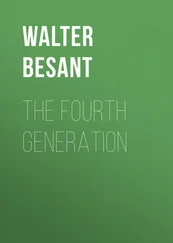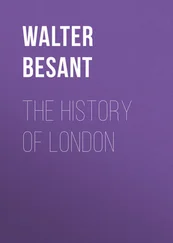In 1348 the Black Death broke out. We shall hear of this again. It is sufficient here to record that probably two-thirds of the whole population of London were killed by this pestilence. The churchyards were full, and would hold no more bodies. The Bishop of London gave one piece of ground and Sir Walter Manny gave another, making in all over 13 acres of land for the burial of the dead: in a short time 50,000 persons were lying there. Another piece of ground given by a priest named John Cony for the same object on the east side of the City was also speedily filled with thousands of bodies.
Scarcely had the City recovered from this calamity when it was called upon to join in suppressing pirates who in time of war and trouble always infested the Channel. The City furnished two ships, one with forty men-at-arms and sixty archers, commanded by Andrew Turk, and one with thirty men-at-arms and forty archers, commanded by Gosceline de Cleve. The fleet destroyed a Spanish fleet and captured twenty-four ships laden with merchandise.
The return of the Black Prince with his royal captive after the battle of Poitiers was an occasion for such a display as the City always loved. A thousand of the citizens, richly clad and well mounted, met the Prince at Southwark: the King of France rode a splendid charger: beside him the victorious Prince rode a little galloway. At the foot of London Bridge they were met by the Mayor, Aldermen, Sheriffs, and the several craftsmen in their liveries and colours. All through the streets the houses were hung with tapestries and glittered with arms and armour of all kinds. It was perhaps the greatest day for the national pride and rejoicing that the City had ever seen.
At the expiration of the Two Years’ truce the war broke out again. A French fleet swept along the coast of Sussex landing an army of 20,000 men, who committed the atrocities common to an invading force, burning towns, destroying crops, killing men. The City of London fitted out a fleet of 80 vessels with 14,000 men, including archers, but these were too late to meet the enemy.
It was at this time that Henry Picard, the Vintner, gave that most famous of all the City banquets, at which he entertained the King of England, the King of France, the King of Scotland, the King of Denmark, and the King of Cyprus, as well as the Black Prince.
The war lingered on for some years, but there were no more glorious victories, and in 1375 peace was concluded. A change was attempted in the constitution of the City; by this the election of Mayor, Sheriffs, and Common Council was placed in the hands of the guilds instead of the wards, but after ten years the new plan was found not to work so well as the old, to which the City returned.
In 1365 an important ordinance was passed concerning what things a tenant in leaving a house might take with him:—
“It is ordained that if any persons hire a tenement, House, or Houses, in the city of London or in the suburbs of the said city, to hold the same for the term of Life, or of Years, or only from year to year, or from quarter to quarter: if the said tenant shall make, or cause to be made, any pentyses or other easements in the said tenement, house, outhouses, fixed with nails of iron or wooden pegs to the premises, or to the soil thereof: it shall not be lawful for such tenant to remove such pentyses or easements at the end of the term, or at any other time to destroy them: but they shall always remain to the landlord of the said premises, as a parcel thereof.”
This ordinance was translated from Latin into English with the following explanation:—
“Whereas nowe of late amonge divers people was sprongen Matter of doute upon the most olde custome had and used in this Cyte of London, of suche thyngys which by tenauntys terms of lyfe or yerys been affixyd unto houses, without specyall lycence of the owner of the soyle, whether they owe to remayne unto the Owner of the Soyle, as Parcel of the same, or ellys whether it shall be lawfull unto suche Tenantys on thende of her terme all suche thyngys affyxed to remove.
Whereupon olde Bokys seen, and many Recordys, olde processys, and judementys of the sayd Cyte, it was declared by the Mayre and Aldermen, for an olde prescrybed custome of the Cyte aforesayd, that all suche easementys fixyd unto houses, or to soyle by suche tenementys, without specyal and expresse lycence of the owner of the soyle, if they be affyxed with Nayles of Irne or of tree, as pentyses, glasse, lockys, benchys or ony suche other, or ellse yf they be affyxed with Morter or Lyme, or of erther or ony other Morter as forneys, leedys, candorous Chemyneys, Corbels, pavemettis, or suche other: or elles yf plantes be roetyd in the grounds, as vines, trees, grasse stounks, trees of fruit, etc., it shall not be laufull into suche tenauntys in the end of her terme, or ony other tyme therin, nor only of them, to put awaye more, or plucke up in ony wyse, but that they shall alway remayne to the ownar of the soyle, as parcels of the same soyle or Tenement.”
At the Good Parliament of 1376 three City Aldermen were charged with malversation. All three were deprived of their posts: one was imprisoned, one fled to Flanders to escape trial, one was deprived of his patent of monopoly. With the design of winning favour from the young heir to the Crown, the City resolved upon presenting him with an entertainment and gifts. The Prince with his mother and his suite was living at the Palace of Kennington.
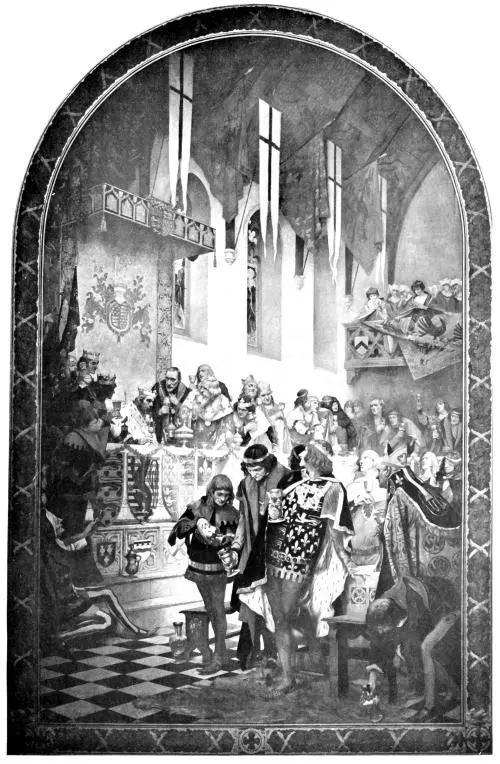
SIR HENRY PICARD ENTERTAINING THE KINGS OF ENGLAND, FRANCE, SCOTLAND, DENMARK, AND CYPRUS
From the Fresco painting in the Royal Exchange, London, by permission of the Artist, A. Chevallier Tayler.
“For which purpose, on the Sunday before Candlemas one hundred and thirty-two citizens on horseback in Masquerade attended by trumpets, a variety of other musical instruments, and a vast number of flambeaux, marched from Newgate through the City and Borough of Southwark, to the Prince’s residence aforesaid. In the first division rode eight and forty persons dressed in the habits of Esquires, with Red Coats, Say2 Gowns, and beautiful Vizards. Then followed the same number of persons apparelled like knights, in the same livery as the former. Then rode one in a very pompous imperial habit, followed at some distance by a person resembling the Pope, attended by four and twenty Cardinals: followed by ten persons in hideous black vizards, as legates from an infernal Pontiff. This Cavalcade of masquers being arrived at the Palace, they dismounted and entered the hall, whither instantly repaired the Prince, the Princess of Wales, and the Nobility their attendants. They were saluted by the masquers, who, producing a pair of Dice, showed their inclination of playing with the Prince. The Dice were so artfully prepared that, whenever the Prince threw, he was sure to win, and having thrown three Times, he won a Bowl, a Cup, and a Ring, all of massy gold: after which the said masquers set the Princess, the Duke of Lancaster, and all the other lords, each with a gold ring which they likewise won: whereupon they were most sumptuously entertained at supper: and, after having the honour of dancing with the Prince and Nobility, they joyfully returned to the City.”
In 1371 the King granted a charter ordering that no strangers, i.e. none except freemen, should be allowed to sell by retail, within the City and the suburbs. This privilege had always been resented by the citizens, who were more in favour of free trade.
The reign of Edward III. is remarkable for the regulations of the crafts and companies which were issued, and the formation of companies under rules and by royal license. In Riley’s Memorials we find Charters, Articles, and Ordinances granted to the following long list, between 1327 and 1377. The list is set down in chronological order:—
Читать дальше
